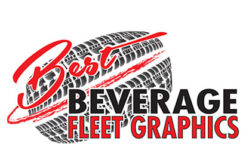Articles by Tom Kelley
Protect your fleet through driver training, scheduled vehicle maintenance
Read More
Mid-America Trucking Show focuses on safety, efficiency
Trucking companies highlight telematics solutions
May 16, 2014
Fleet managers turn to route optimization to cut delivery costs
Route optimization, tracking software boost distribution efficiency
March 14, 2014
The 2013 State of the Beverage Fleet Industry
Results reflect shift to end-load trailers
February 14, 2014
New Belgium’s brewery-direct fleet goes hybrid
Craft brewer blends environmental stewardship with local distribution
January 15, 2014
Best Fleet Graphics of 2013
Leading fleets use innovative graphics to stand out
October 16, 2013
Top fleet manager offers thoughts on alternative fuels
A Q&A with Silver Eagle Distributors’ Ed Pritchard
September 16, 2013
Elevate your expertise in the beverage marketplace with unparalleled insights and connections.
Join thousands of beverage professionals today. Shouldn’t you know what they know?
JOIN NOW!Copyright ©2025. All Rights Reserved BNP Media.
Design, CMS, Hosting & Web Development :: ePublishing







